10 Neat Things About Praying Mantis
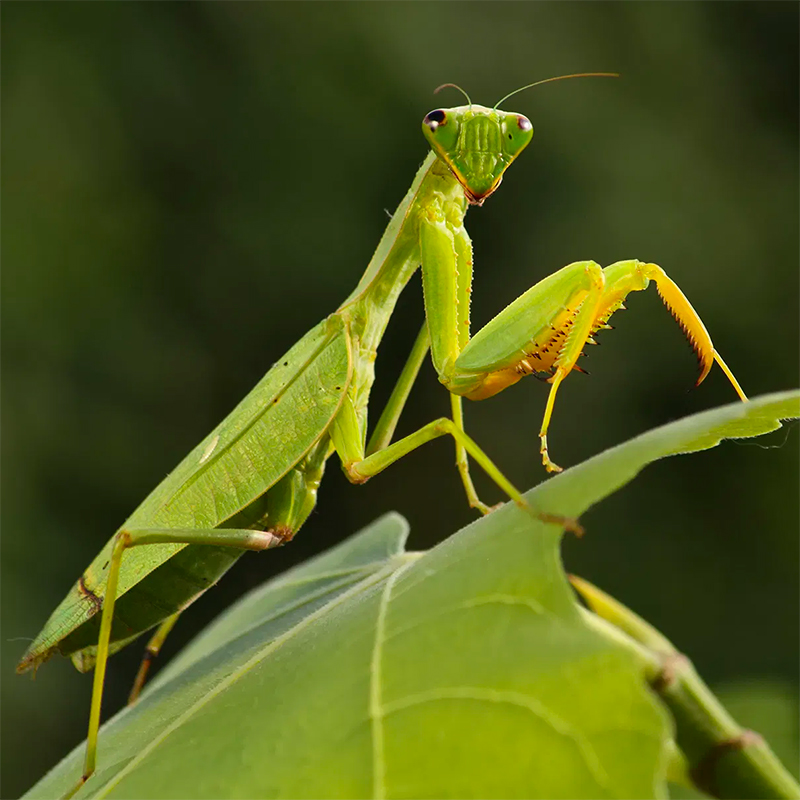
1. So, what’s a praying mantis?
A praying mantis (in the order of Mantodea) is a fascinating insect that is related to cockroaches – in fact, it is thought to have evolved from the cockroach — but it looks far more like a stick insect from the tropics than its true relatives, which include termites.
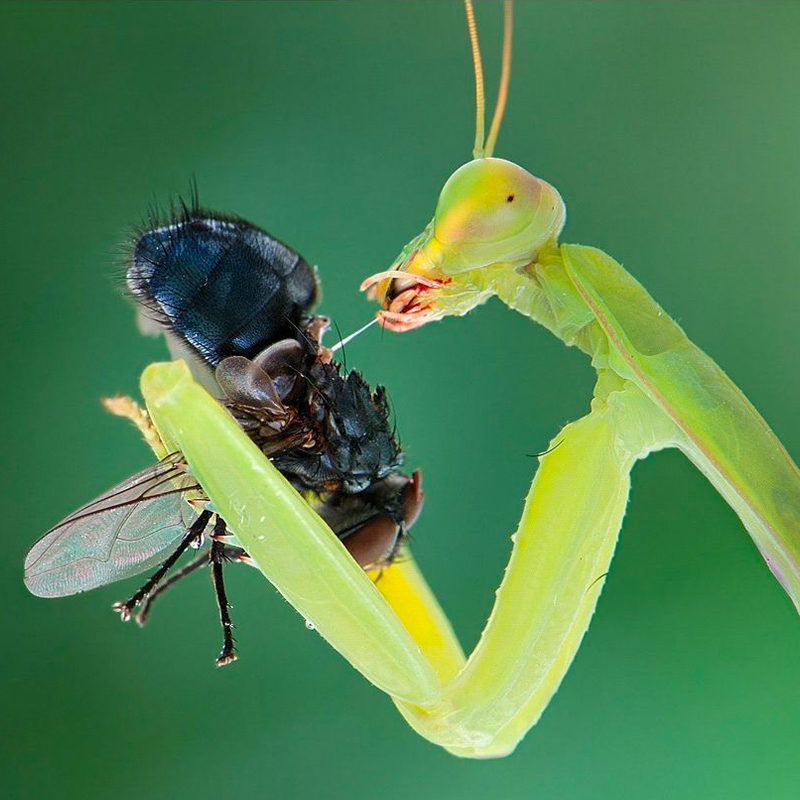
2. Praying or preying?
It does not do the former, but it does do the latter, still it’s named for the former. Praying mantises are so-called because they fold their forelegs together to hold their prey, which somehow looks like a religious experience. Go figure.
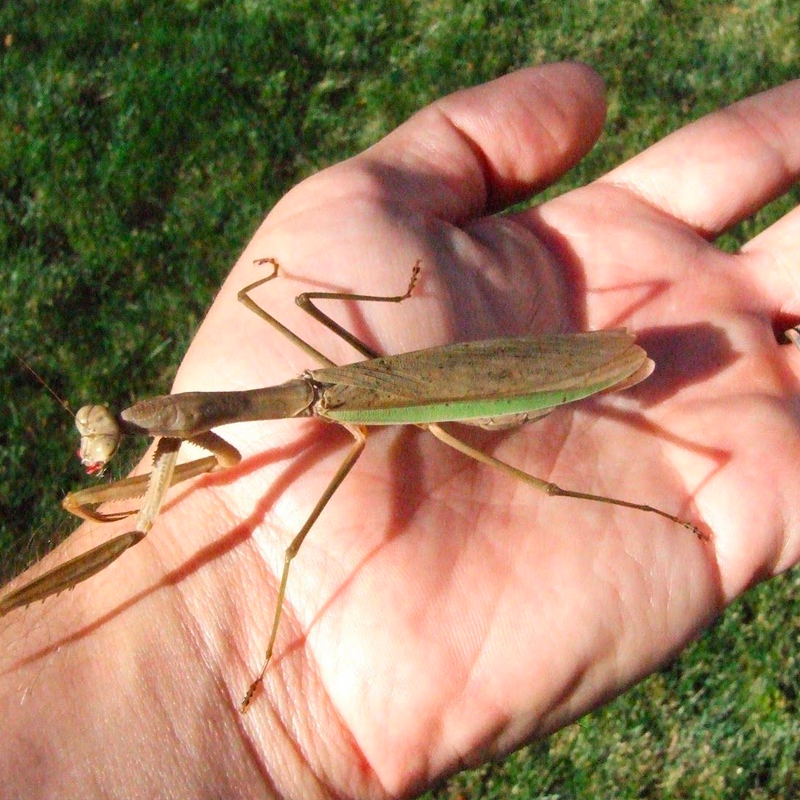
3. Man’s friend in the garden.
A praying mantis can grow anywhere from two to five inches in length. The larger species have been known to consume everything from scorpions to frogs. Lizards, birds, snakes and even small rodents can be part of the diet of large hungry mantises. Don’t worry though. They’ve never been known to attack humans, and they do not produce venom. They can bite and, if you tease them enough, they will. They are much-loved in the garden, thanks to their ability to devour enormous numbers of insects. Chances of them catching a hummingbird, as has been observed where the largest ones live, is remote. One bug, however, will keep your deck and a small garden, leaf-eater free. They do prefer to kill their own meat, worth knowing if you are thinking of keeping one as a pet (yes, people keep them as pets).
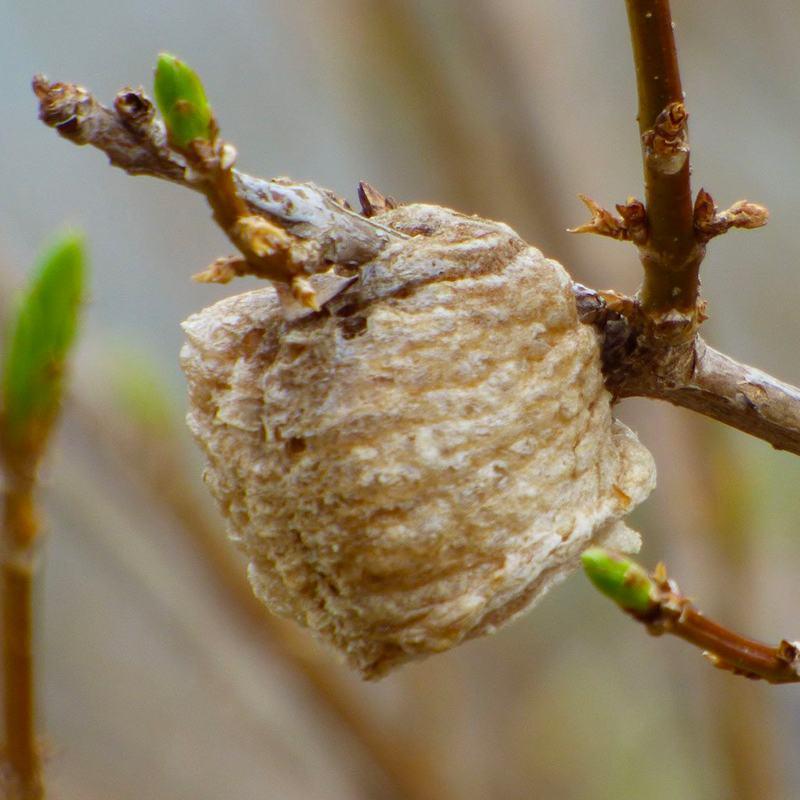
4. A short and solitary life.
Praying mantises live only six months to one year – 14 months at the longest. They are extremely territorial, although they spend their egg-period encased in a pod with 50 to 400 others. Upon hatching, it’s every mantis for itself and some will get eaten by their brothers and sisters. The males are brown, thin and sticklike. The females, green, fatter and juicier.
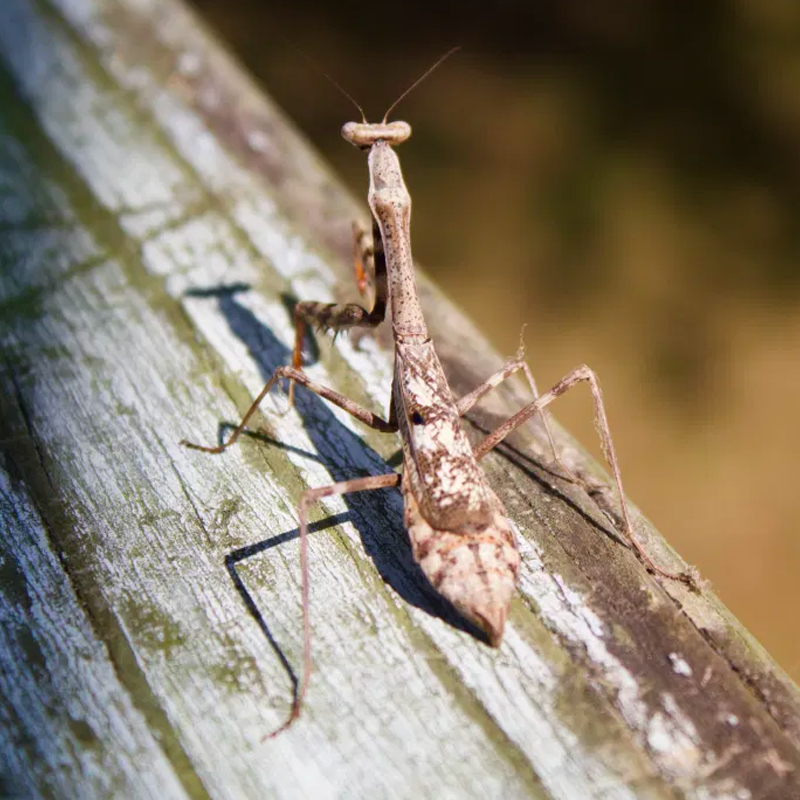
5. Clever hunters.
Masters of the art of camouflage, praying mantises like to pretend they are leaves or twigs or part of the understory. They can look like bark, blades of grass or even stone. They can even resemble and blend into the flower of white orchids. But when they decide to strike, their prey has little chance. Their reaction time is many times faster than our ability to blink.
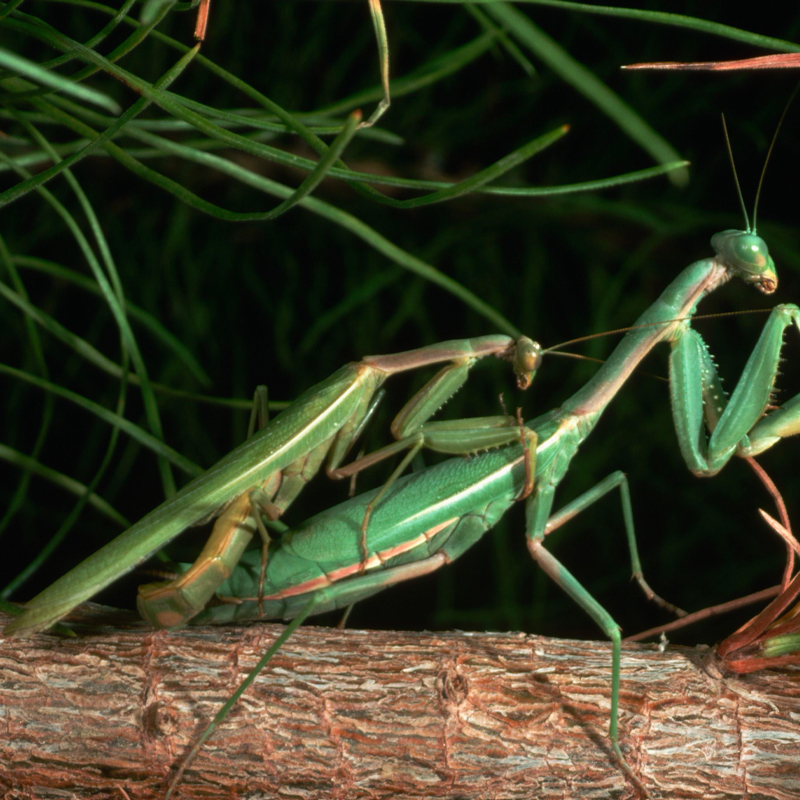
6. Don’t let sex go to your head.
The female praying mantis may be praying because she is looking for forgiveness for biting off the head of her mate after coitus. Seriously, though, this behaviour has only been noted in captivity and postulations that this act may force an extra expulsion of sperm are only postulations. Normal mantises would never think of such an act — or would they?
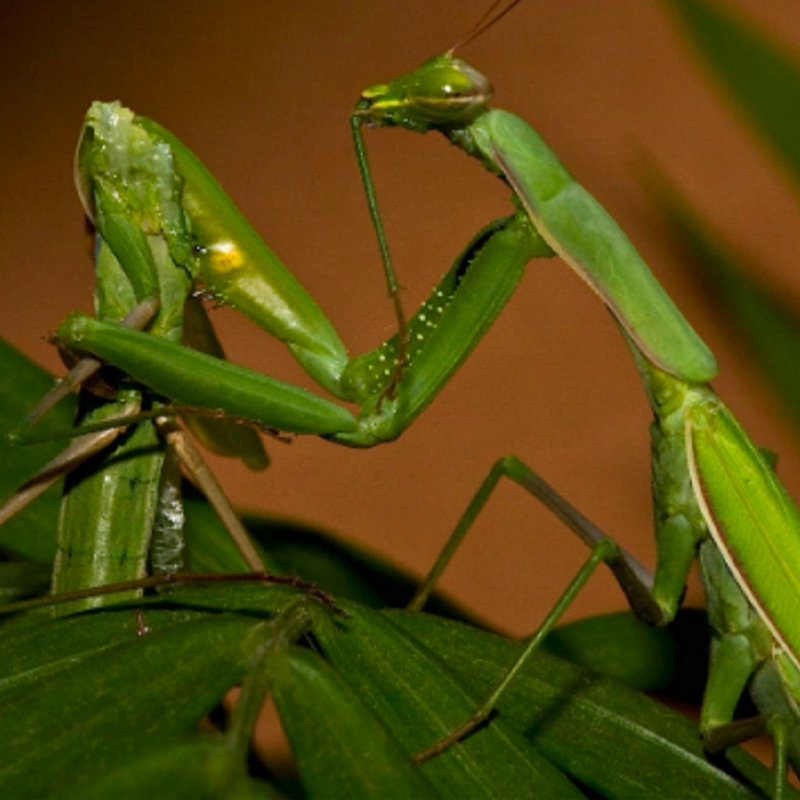
7. You don’t have to bite my head off!
Still a mantis seems to enjoy heads and it chews its food rather than sucking it. The praying mantis holds its prey in its saw-like forelegs, paralyzes it with a strategically placed bite, and devours its prey while it is still alive – that is, if the prey will co-operate and allow this to happen. If the prey struggles too hard, the predator will bite off its head, thus putting an end to any further argument.
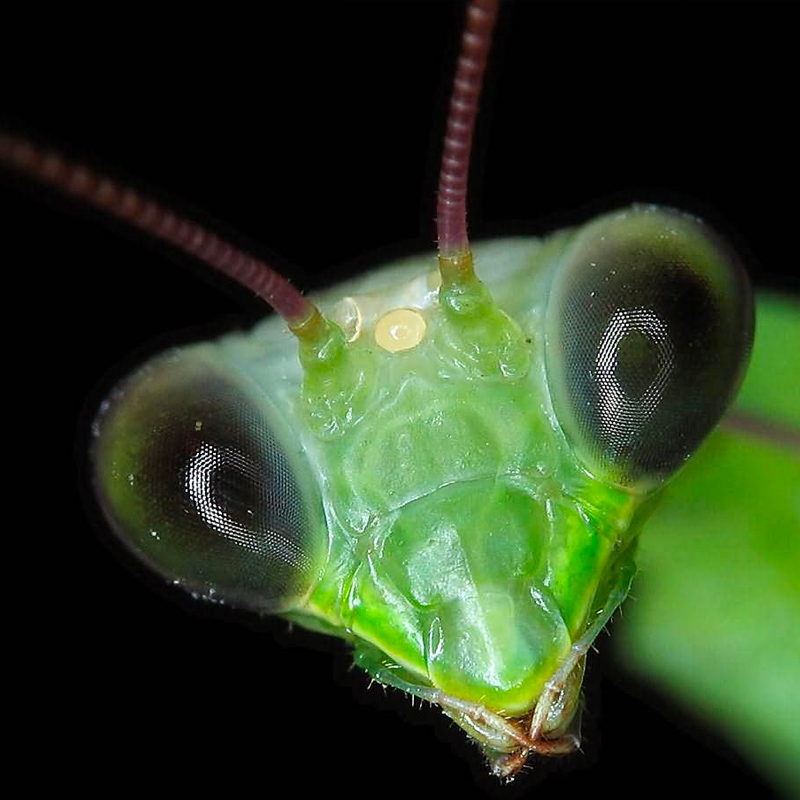
8. Great eyes, radar reception.
A lazy killer, the praying mantis prefers to lie in wait until the unsuspecting prey bungles into its sphere, whereupon it will lash out with lightning speed and strike. But life doesn’t always follow a pattern and mantises are willing to chase reluctant prey. Some can apparently detect and decode the echo location sound of bats – a useful talent since bats prey on the prayers.
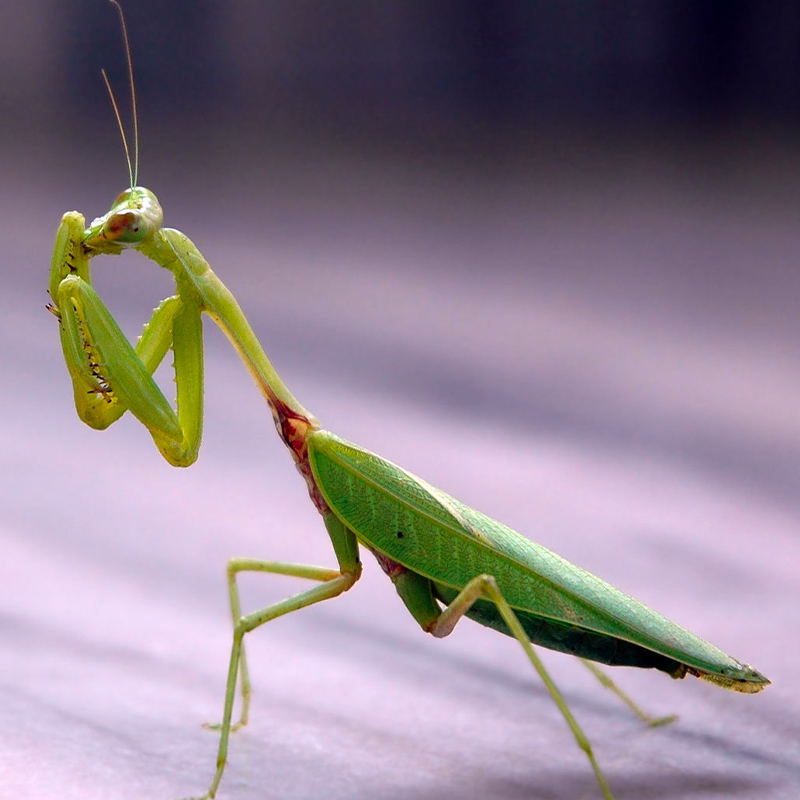
9. The better to see you with my dear.
Praying mantises have three-part bodies, consisting of a head, thorax and abdomen. The wings and the legs are connected to the thorax, which narrows to a long “neck” holding the head. The head is triangular and can move 180 degrees in search of prey. Large compound eyes occupy either side of the triangle, with three simple eyes between them. The compound eyes register images and colour. The three simple eyes in the middle distinguish light from dark.

10. Canadian praying mantis.
There is one native Canadian praying mantis, which lives in southern BC. It could be being outcompeted by imported species which are becoming more prevalent in temperate parts of the country. Praying mantis is now being sold by many garden centres and is available from those who sell natural products for insect control. They come in a hard little egg case that you put out in spring as soon as the weather warms up. When they hatch, those who survive will disperse and begin their feeding ritual.





